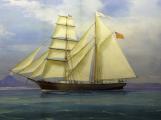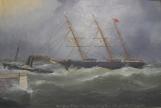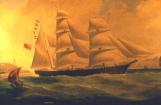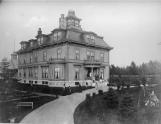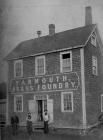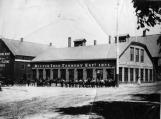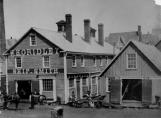1
With the early English speaking settlers being from Massachusetts, it was only natural that the early inhabitants should trade with Boston for the manufactured goods they required. Gradually this trade grew to include the West Indies, Saint John, and Halifax. Typical cargoes were wood or salt fish to the West Indies, sugar, rum, molasses, or salt from the West Indies to Boston or Saint John then home with manufactured goods.As the skills of the shipbuilding, navigation, and business increased so did the size of Yarmouth's fleet; and, as the fleet grew, so did the number of ports the ships and their Yarmouth masters visited. Yarmouth became known throughout the shipping world. Indeed, in 1879, when Yarmouth reached its peak as a ship-owning port, the town was the second largest port of registry in Canada in terms of tonnage. This was at a time when Canada was the fourth leading maritime nation in the world. (See Story # 3 for details.)
3
To illustrate the importance of Yarmouth vessels in world trade we can cite the following: in 1876 Yarmouth vessels made over 800 calls to at least 156 ports around the world. Much of this trade was Transatlantic with Liverpool, England being the most visited port. However, they also called at ports in Africa, India, the Far East, Australia, and both East and West Coasts of both South and North America. Later on, in the 1880's and 1890's, our ships travelled to these faraway places more often.5
They carried bulk cargoes such as:-coal, from South Wales to coaling ports such as Rio Janeiro, Buenos Ayres and Cape Town
-coal from Newcastle, Australia to South America
7
-oil from Philadelphia, Baltimore and New York to the Far East, including Japan, Shanghai, Hong Kong and the Philippines-sugar from the Philippines to Europe
-jute from India to Europe and the United States
9
-grain from Portland, Oregon and San Francisco to Europe-guano from Chile and Ecuador to Europe
-wood from Canada and the United States to Europe and South America
just to name a few cargoes.
